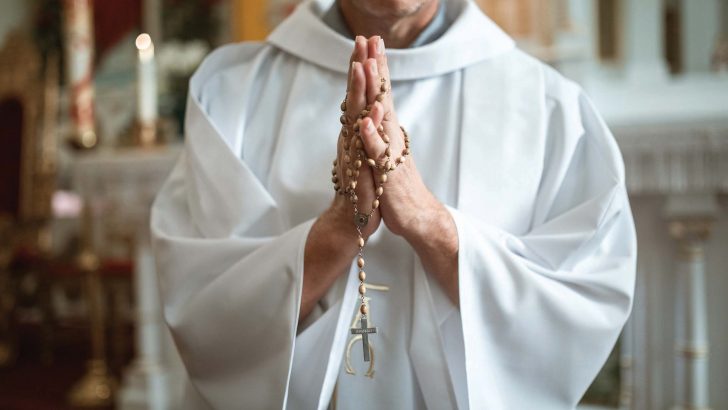After much promotion by bishops and priests the Irish Church’s Year of Vocations comes to a close at the end of this month. Over the course of the initiative, announced by Bishop of Waterford and Lismore Alphonsus Cullinan, immersive events have popped up around the country with the intention of assisting and encouraging young men who feel that they may be equipped to, as the promotional slogan evocatively says, “take the risk for Christ”.
Every business needs to sustain itself and the Church’s recruitment drive in the country is no different to a slowly depleting multinational reaching out to the masses on LinkedIn, or other recruitment sites. The challenge is immense.
The only problem with the Church’s version of recruitment when compared with, let’s say, our booming multinational sector, is the simple commitment to perpetual celibacy, no fixed hours, overtime that’s not accounted for, constant and often unrealistic demands, and being expected to stabilise an institution that is creaking and teetering into the unknown, is a tall order for any young person. Yes priesthood requires sacrifice but many parents are hesitant to encourage their sons towards the priesthood because there seems to be a lot of unnecessary sacrifice in terms of workload and burnout.
With Easter comes one of the most hectic and restless periods in the life of a priest. For many this period forms part of the novelty where a family attends the local church twice a year, the second time being Christmas. Attendance goes up substantially. Even the most remote parishes struggle to accommodate the large volume of people; we have a vision of what the parish dynamic in our churches could look like every week but at the same time in this climate, seems so hopelessly beyond our reach. Is it unrealistic to try and win these people back? Or should we downsize and cater to the people who are committed all year round? If we are to remain with an ordained male-only clergy, it would seem that despite the rumblings of lay involvement and synodality, the latter is the only realistic option, which in itself, needs huge planning and resources, and courage by leadership in the Church.
As our world changes, so too must our approach to spiritual leadership and community support. Our priests stand ready to navigate these changes, but they need the support, understanding, and active involvement of their congregations and their bishops. Encouraging vocations to the priesthood is another aspect of this reflection. In a world where secularism and materialism increasingly overshadow spiritual callings, encouraging young men in our community to consider the priesthood is paramount. Yet it also must be modern. Seminaries, and training need to be modernised, priesthood needs to attract young men who can ably go onto further education. The lived life of a young priest needs to respect his work/life balance and his need for financial security.
This endeavour begins with us—through our respect, support, and vocal appreciation for our priests, we can try to inspire a new generation to embrace this sacred calling. Let us also acknowledge the diversity within our Church and the unique perspectives and talents that each priest brings to his ministry. By celebrating this diversity, we enrich our community and foster a more inclusive and understanding Church. Our priests, with their varied backgrounds and experiences, are a testament to the universal call of Christ, transcending cultural and ethnic boundaries. In conclusion, as we move forward, let us do so with a renewed reverence for the priesthood and a commitment to deeper engagement with our spiritual shepherds. Let us pray for our priests, support them in their ministry, and consider how we, as a Church, can better serve alongside them in the mission of spreading the Gospel. In doing so, we not only elevate our priests but also strengthen the very foundation of our faith community. Together, as one body in Christ, we can face the challenges ahead, grounded in love, faith, and mutual respect.



